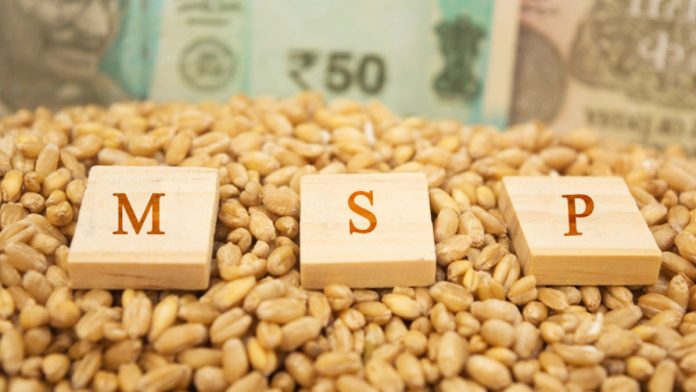Dissatisfied by the government's latest offer, farmers from Punjab and Haryana remain steadfast in their march towards Delhi. They rejected the proposal to buy five specific crops at minimum support prices (MSP) under a five-year contract, calling it insufficient. In the fourth round of talks with the farmer delegations, the committee of three Union Ministers including Union Agriculture Minister Arjun Munda and Commerce Minister Piyush Goyal had proposed a solution that government would buy five crops- pulses (three types), maize and cotton by government agencies at minimum support prices under a five years contract with farmers. Addressing media on Monday night, farmer leaders said that their core demand – a legally guaranteed MSP for all their crops – remains unmet.
The Buckstopper, in this explainer delves into the complexities of MSP, exploring the arguments for and against a legal guarantee, as India seeks a solution to this critical agricultural issue.
What's the deal with MSP
The concept of MSP was introduced in 1966-67 to shield farmers from market fluctuations, ensuring a minimum price for their crops. This initiative aimed to support farmers during times of oversupply, preventing distress sales and ensuring fair returns.Every year, central government buys 23 mandated crops from the farmers and store them for later use. Generally, these crops are distributed under various public distribution schemes. The government also keeps these procured crops for the critical time when a bad monsoon hurts crop supply.However, MSP lacks legal backing.
How is MSP is Calculated?
MSP is determined based on various factors, including production costs such as seeds, fertilizers, labour, machinery, and land rental value. And by factoring in these costs and offering farmers a minimum price, they'd be protected from market losses,at least, in theory.Despite its theoretical benefits, the absence of a legal framework leaves MSP subject to government discretion. And that's the primary demand of the protesting farmers. They want a law enacted around MSP.

Feasibility of Legalising MSP
No-one has an easy answer to it. We look at the arguments from both sidesto break down the complexities.The debate on legalising MSP hinges on its economic viability. Legalizing MSP could lead to distortion in demand-supply dynamics and impose a substantial financial burden on the government.As per reports and expert assessments15%-25% farmers in the country benefit from MSP. What will be the impact of it when agriculture still contributes 15% to India's GDP and it generates employment for close to half of its population? This situation demands adequate support to the farmers for saving them for the debt trap. On the other hand,only a small percentage of farmers directly benefit from MSP.
Leading agricultural economist Ashok Gulati suggests that such a move could lead to legal repercussions for buyers who purchase crops below the MSP. Moreover, the financial implications of guaranteeing MSP are substantial, with estimates ranging from ₹6 to ₹9 lakh crores. This expenditure dwarfs the government's annual average spending on infrastructure development over the past seven years, raising concerns about its practicality and potential impact on other developmental initiatives.
Alternatives and Challenges
Some propose allowing farmers to sell in open markets, compensating the difference between market prices and MSP. However, concerns arise regarding potential exploitation by traders, as seen in past experiment when Madhya Pradesh government introduced the same plan for it's farmers in 2017. Others advocate for direct income support schemes like PM-Kisan, to provide financial assistance based on landholding.Top of Form
Historical Context
Initially introduced to incentivise cereal production to feed India's growing population in 1966-67, MSP aimed to ensure fair prices for crops like wheat and paddy. It was wheat that first got an MSP at ₹54 a quintal.
However, its evolution and current challenges highlight the need for a comprehensive policy framework.While alternatives exist, each presents its own set of challenges.

Ram Kumar Kaushik is a seasoned journalist with over 25 years of experience across mediums. The architect of this news website, he is also a consultant with several media groups. He was formerly the group managing editor of ITV Network (NewsX, India News and The Sunday Guardian) and its digital products.



